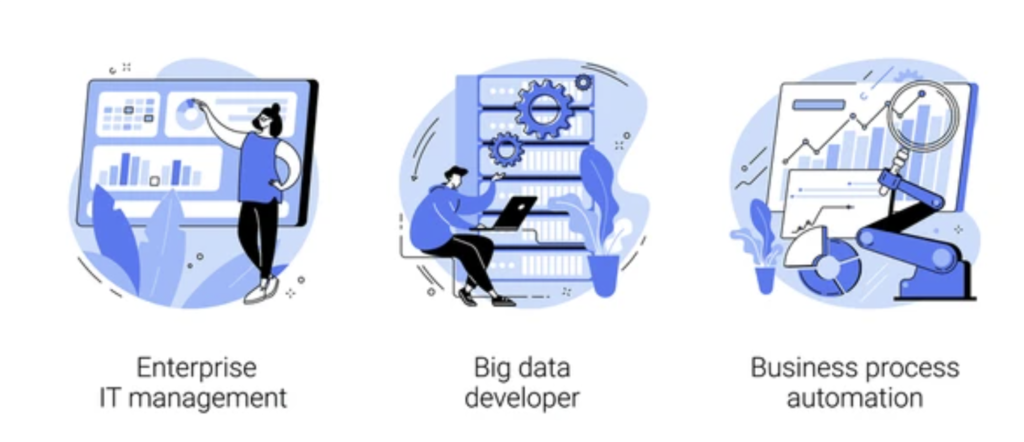
Table of Contents
The technology landscape is evolving rapidly, with cloud-native computing emerging as a game-changer for businesses of all sizes. This paradigm promises scalability, agility, and speed—critical attributes for thriving in today’s digital world. However, the journey to adopt cloud-native approaches varies significantly for startups and big enterprises. While the benefits are undeniable, the challenges differ depending on the size, structure, and needs of an organization. Let’s delve into these challenges and understand the cloud native challenges for startups vs. big enterprises and how cloud-native fits differently into the world of startups versus big enterprises.
What is Cloud-Native?
Before diving into the challenges, let’s briefly understand what cloud-native means. Cloud-native is an approach to building and running applications optimized for modern cloud environments. It emphasizes:
- Containers: Lightweight, portable units of software.
- Microservices: Independent modules designed for specific business functions.
- Serverless Architectures: Functions that run without server management.
- Infrastructure as Code (IaC): Automated infrastructure provisioning.
These components collectively enable organizations to deploy applications faster, scale efficiently, and innovate rapidly.
Startups: The Pros and Cons of Cloud-Native

Advantages for Startups
- Cost-Effectiveness:
- Cloud-native platforms eliminate the need for heavy upfront investments in infrastructure. Startups can “pay as they grow”—a boon for organizations with tight budgets.
- Faster Time-to-Market:
- By leveraging microservices and serverless functions, startups can build and deploy applications swiftly, gaining a competitive edge in delivering products and features.
- Flexibility and Agility:
- Startups can quickly pivot or scale based on market needs. Cloud-native tools like container orchestration make it easier to adapt to changing requirements.
Challenges for Startups
- Complexity in Initial Setup:
- Implementing cloud-native architecture can be overwhelming for small teams. Managing tools like Kubernetes or Docker requires specialized knowledge.
- Overengineering Risks:
- Startups often overestimate their needs, adopting complex systems like microservices prematurely. This can lead to unnecessary overhead and slower development cycles.
- Cost Management:
- While cloud-native is cost-effective, mismanagement of resources like over-provisioned containers can lead to ballooning costs, which small startups might struggle to handle.
- Talent Shortage:
- Expertise in cloud-native technologies is in high demand. Startups may face challenges hiring skilled professionals or training their teams.
Big Enterprises: The Pros and Cons of Cloud-Native

Advantages for Big Enterprises
- Scalability:
- Enterprises with global operations require scalable solutions. Cloud-native platforms enable them to handle millions of users seamlessly.
- Improved Resilience:
- Features like self-healing nodes and distributed systems ensure high availability and reliability for critical business operations.
- Enhanced Innovation:
- Cloud-native approaches empower large organizations to roll out new features rapidly, staying ahead in competitive markets.
- Resource Optimization:
- Through serverless architectures and containerized environments, enterprises can optimize resource usage and reduce operational costs.
Challenges for Big Enterprises
- Legacy Systems Integration:
- Transitioning from monolithic, legacy architectures to cloud-native setups is daunting. Enterprises often face compatibility issues and require significant effort to refactor applications.
- Cultural Shift:
- Adopting cloud-native is not just a technological change; it’s a cultural one. Enterprises need to embrace DevOps principles and break silos between development and operations teams.
- Security Concerns:
- Larger organizations are attractive targets for cyberattacks. Securing multi-tenant environments and managing compliance is a complex task.
- Operational Overheads:
- Managing large-scale cloud-native deployments, such as orchestrating thousands of containers or microservices, requires sophisticated tools and teams.
Comparing Use Cases: Startups vs. Big Enterprises

Case Study 1: Uber’s Journey
Uber’s initial monolithic architecture posed challenges as the company expanded globally. Frequent code changes, scalability issues, and testing bottlenecks slowed innovation. Transitioning to a cloud-native microservices architecture helped Uber overcome these challenges. By introducing an API Gateway and modular microservices, Uber achieved independent scalability and faster development cycles.
While this transformation was essential for Uber, such an approach might be overkill for startups. A modular monolith could suffice for smaller organizations until they reach significant growth milestones.
Reeference: Uber’s Engineering Blog
Case Study 2: A Small Startup
Consider a small e-commerce startup with limited resources. Implementing cloud-native features like microservices and container orchestration may not be cost-effective initially. Instead, they could focus on a simpler architecture, leveraging serverless functions and SQL databases. This approach allows them to prioritize speed and cost efficiency without the complexity of full-scale cloud-native adoption.
Key Considerations for Cloud-Native Adoption
For Startups
- Focus on Simplicity:
- Start small with serverless functions or basic containerized applications.
- Avoid Overengineering:
- Assess actual needs before adopting microservices or complex orchestration tools.
- Leverage Managed Services:
- Use cloud provider services like AWS Lambda or Google Cloud Functions to reduce operational overhead.
- Build a Learning Culture:
- Encourage teams to upskill in cloud-native technologies incrementally.
For Big Enterprises
- Plan for Gradual Transition:
- Use a hybrid approach, migrating parts of the system to cloud-native while retaining critical legacy components. See my detail blog post for mastering software rewrites
- Invest in DevOps Practices:
- Foster a culture of collaboration and continuous delivery to maximize cloud-native benefits.
- Prioritize Security:
- Implement robust security practices, including identity management, encryption, and compliance monitoring.
- Leverage Automation:
- Automate deployment, scaling, and monitoring to manage complex cloud-native setups efficiently.
Conclusion
The cloud-native approach offers immense potential but is not a one-size-fits-all solution. Startups can leverage its agility and cost-effectiveness to kickstart their journey, while enterprises can use its scalability and resilience to innovate at scale. However, each organization must carefully weigh the challenges and adapt cloud-native strategies to their unique context.
Whether you’re a startup looking for rapid growth or a big enterprise aiming to stay competitive, cloud-native is undoubtedly a powerful tool. The key lies in understanding when, where, and how to adopt it effectively—a decision that can propel your organization into the future of technology.
